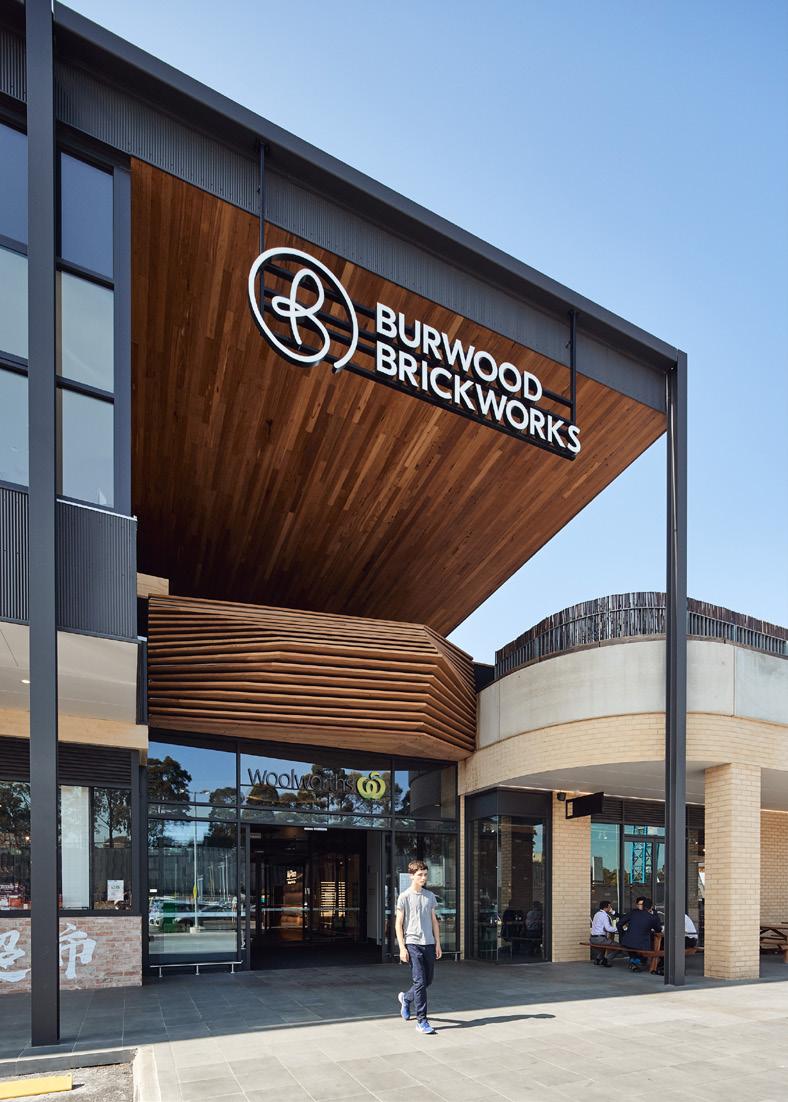
3 minute read
Excellence in Construction Awards 2020
Excellence in Construction Awards 2020 Best Sustainable Project
Hacer Group Pty Ltd
Burwood Brick Works Shopping Centre Burwood Brickworks is like no other retail shopping centre. Having an urban farm, café and chickens on the roof certainly goes some of the way to delivering on this. It is designed to be a leader in the sustainable development and was delivered by Hacer Group. Hacer Group were required to deliver a shopping centre with 3 major tenants; 3 minimajors; cinemas and 40 speciality tenancies while integrating the most stringent Environmental criteria to satisfy the requirements of Green Building Council of Australia and International Living Building Institute (ILBI). The centre achieved a 6 Star Greenstar As Built rating. The overall structure included a basement car park, a 4,000sqm deck over the car park and approximately 2,000sqm for an urban farm tenancy. The façade was largely precast using recycled crushed brick and also incorporated, salvaged brickwork, salvaged timber and expansive windows. The car park even incorporated bioswales for water re use and feature landscaping intricately integrated with the façade.
In addition to this the project was required to meet the Living Building Challenge (LBC) of the ILBI. This means that the building had to meet the requirements of a number of key areas grouped under the headings, Place, Water, Energy, Health and Happiness, Materials, Equity and Beauty. During the construction process, the focus was on material compliance, waste mitigation and reusing salvaged products. Material compliance involved obtaining and reviewing all ingredients that make up each component of every product installed, applied or placed on site. There were in excess of 850 ingredients that need to be avoided as they are considered worst-in-class materials/chemicals with the greatest impact to human and ecosystem health.
The procurement strategy needed to ensure at least 20% of the projects products/cost were sourced within 2000km, 30% within 5000km and 25% within 9000km from the project site to satisfy the living economy imperative. In the end, over 80% was sourced within 2000km. This was achieved by focusing on the selection of materials from salvaged opportunities wherever possible. For example, utilising the formwork from the concrete pours as a hanging installation and as wall cladding in the main car park entry travelator lobby.
As part of the Green Star criteria, 90% of construction waste had to be diverted from
landfill. In addition to this, the LBC also had specific targets for particular waste streams. For example, 99% of metals and cardboards were recycled and 100% of soil and biowaste was reused on nearby projects sites. This was managed with the use of multiple bins on site, clear signage and site policing to ensure separation of waste streams allowing for ease of waste diversion.
Nine bays, each spanning an excess of 16 metres, of northfacing operable windows, provides building occupants access to the outside world with both natural daylight and fresh air regularly. For all regularly occupied tenant spaces, where the natural daylight and air may not reach, openable skylights have been installed with tenancy controls. Within the centrally located Woolworths tenancy, SolaTubes have been installed to allow daylight to channel down to employees working in the store.
Close to 3,000 PV panels have been installed across the roof deck of the Burwood Brickworks Shopping Centre which contributes towards the power supply demanded by the building’s use. The system will supply 1MW of power.

A closed-loop water system has been installed on the basement level of the building to treat wastewater. This system has been designed to capture, treat and re-use both rain and waste water sourced from the Burwood Brickworks Shopping Centre for use in the toilets and gardening areas.
An important part of the construction process was ensuring that subcontractors were aware of the sustainability initiatives to ensure that they were met. Educating subcontractors on the purpose of LBC and Green Star requirements was initially overwhelming for the trades as it highlighted an unknown risk. Therefore, subcontractors were continually supported through the process. It was also important to ensure that the education which was being delivered to the key project managers of each subcontractor trade was actually filtering down to the wider subcontractor team on site.
On-going sustainability education through inductions, Toolbox Meetings and posters were used to ensure the message regarding sustainability initiatives during construction reached all those involved in the project. An additional component of the site management of LBC and Green Star largely revolved around policing the use of approved materials, rather than off the shelf solutions, and ensuring the correct bin selection for waste disposal was made.






